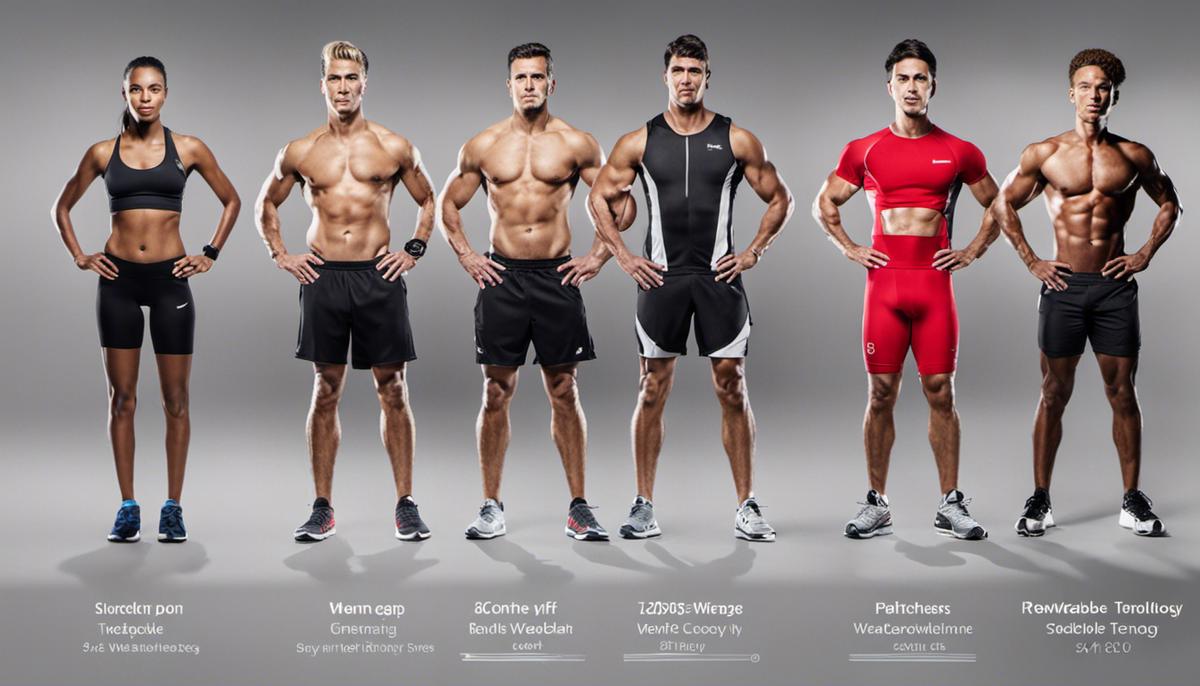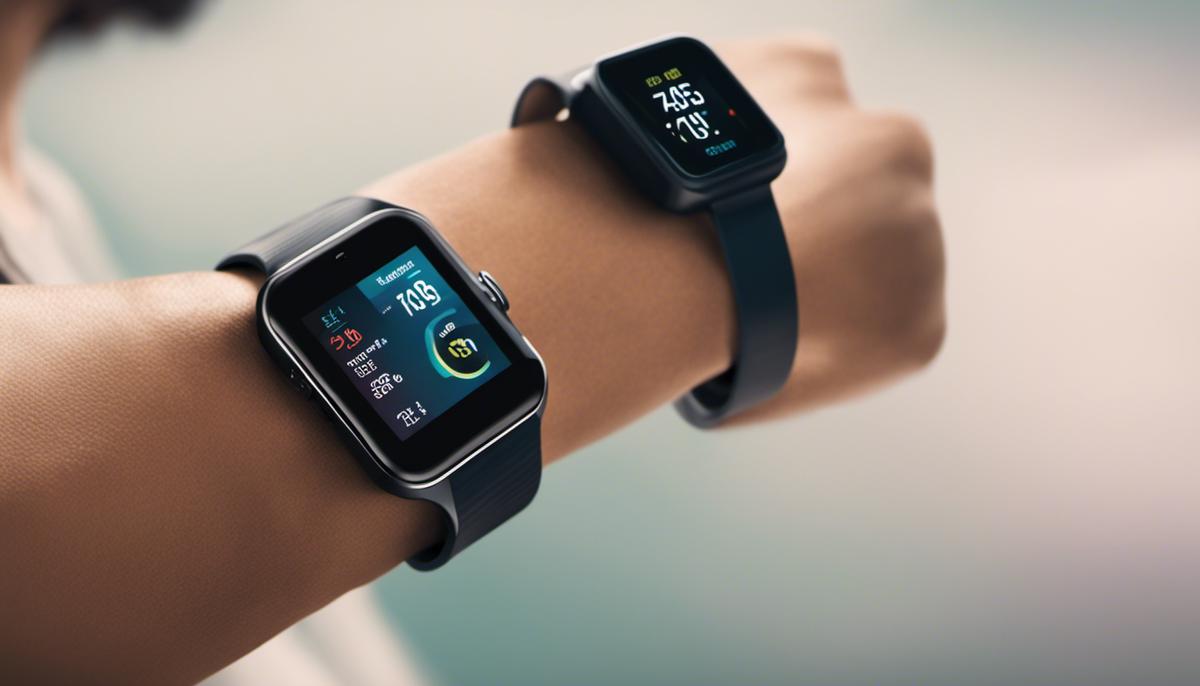In the dynamic landscape of technology, the sector that perhaps holds the most relevance to the daily lives of millions across the globe is the sphere of wearable fitness technology. This domain has seen a steady surge in sophistication and diversity, from the rudimentary pedometers of initial years to the multi-functional, sleek, and smart wearables today. Embraced by all strata of society, these devices have revolutionized our approach towards health and fitness. By offering real-time tracking of vital statistics to providing insights into one’s nutrition and emotional health, these wearables are paving the way for an empowered and informed public.
The Evolution of Wearable Fitness Technology
The Evolution of Wearable Fitness Technology: A Journey Through Time
There was a time when tracking physical fitness involved paper, pen, and a stopwatch. Not anymore. Stand Times Square, or on the platform of any busy commute, in the small hubbub of a local coffee shop, and chances are, you’ll count more smart devices than fingers. From Fitbits to Apple Watches, wearable fitness tech is now as commonplace as your morning cup of joe.
The earliest instances of wearable fitness technology date as far back as the 70s. Japanese company Casio can be credited with having produced the first wrist-worn tech, the Casiotron. In 1975, the Pulsar calculator watch by Time Computer, Inc. made its ground-breaking entry. It could function as a miniaturizer calculator without having to rely on any additional pieces of hardware.
The evolution journey then ushered in the 80s, crowned by the launch of the pulse-monitor watches by Polar Electro. These portable heart rate monitors replaced cumbersome EKG machines athletes were once tethered to. They set the stage for the effective use of devices in tracking key performance metrics.
Fast forward to the turn of the millennium, Nike+ Sensor brought a revolution. In collaboration with Apple, they introduced a shoe sensor that communicated with iPods, logging miles run and syncing it with iTunes. This marked the shift for technological devices beyond mere timekeeping to being comprehensive fitness tracking tools.
What really catapulted wearable tech into mainstream limelight, however, was the introduction of Fitbit in 2009. Sleek, compact, wearable on the wrist or clipped to the belt, it could record steps walked, floors climbed, calories burned, sleep patterns and active minutes. Tech had finally met fitness in a large-scale, user-friendly way.
From the introduction of Fitbit, the wearable fitness technology landscape has since exploded with options. Giants like Apple, Samsung, and Garmin entered the fitness tech arena, offering smartwatches that went beyond fitness and had a more holistic approach to smart living.
With time, the horizons expanded to include health tracking, stress monitoring and payment capabilities. The sensor technology drastically improved as well. Today’s wearable devices collect an enormous range of data, relay it to our smartphones in real-time, and suggest ways to improve our health and fitness based on precise analytics.
The evolution of wearable fitness technology over the years stands testimony to human ingenuity and innovation. From small and barely noticeable improvements to noticeable leaps, the industry has made physical health and wellbeing more accessible and interactive for millions around the world.
Looking ahead, what’s next? It’s hard to predict with certainty. Considering recent advancements, it’s reasonable to expect eye-controlled wearables, smart contact lenses, or even more integration with AI to become a reality sooner. Regardless, one thing remains clear – the wearable fitness technology, mirroring our fascination with technology, will continue to spark curiosity and inspire developments for many years to come. From our perspective, future looks exciting, promising and very, very wearable.

Impact of Wearable Fitness Tech on Health and Fitness
Title: The Impact of Wearable Fitness Technology: Changing the Face of Health and Fitness Routines
As we leap ahead into the digital age, wearable fitness technology continues to filter into the mainstream. Detractors may argue against data overload, yet it becomes increasingly clear how the advantages of wearable tech can outweigh potential negatives. A quick review of its effect on our everyday health and fitness routines is enough to silence even the most resistant skeptic.
The revolutionary impact begins with enhanced awareness. Tracking steps, heart rate, calorie-burning rate – it’s no longer a blind guess. These devices offer an intricate personal health profile. Thus, enhancing health awareness leads to better lifestyle choices. How can this be a bad thing?
Of course, this would be only half the story without the immense motivation factor. Badges, rewards, challenges, all pieces towards building a rewarding fitness journey. When hard efforts are quantified and visualized, it not just keeps one committed but also brings forth a competitive edge in their fitness quests.
Furthermore, supplementing traditional healthcare mechanisms, these handy devices now help monitor critical health signs like ECG, blood oxygen levels, sleep patterns, etc. This not only provides real-time health insight to the user but also valuable data to medical professionals, potentially aiding in faster and more accurate diagnosis.
Yet, these technologies don’t exist in isolation. Enter integration with smartphones – emails, messages, calls, social networking; it’s all right on the wrist. Oh, did we mention the pandemic-induced trend of contactless payments through smart wearables? An extra pat on the back for hygiene, isn’t it?
The rise of AI and Machine Learning in this realm, albeit still in the nascent stage, must not go unnoticed. Powerful algorithms analyzing our data to provide customized workout plans, nutritional guidance, and even mental health support are the next big game-changers.
Let’s not disregard the value to researchers. Wearable fitness tech generates a massive trove of data. Population-wide trends in fitness, activity levels, health markers, and their patterns open new doors for advances in public health strategies.
However, amidst this techno-enthusiasm, it is essential to recognize potential pitfalls – The accuracy of algorithms, privacy concerns, dependency, and the risk of ignoring the human element in fitness and healthcare. Surely these are challenges to be met, yet they should in no way overshadow the incredible potential wearable fitness tech holds.
Pressing ever forward into the future, the tech juggernaut will only continue. The fusion of fitness and technology seems inevitable and sensibly so. Leading a healthier, fitter life never seemed this data-powered before, and it seems the journey has just begun.

Future of Fitness Wearables
As we gaze into the crystal ball of tech, an intriguing and promising vision emerges: wearable fitness technology is not just here to stay, it’s slated to morph in previously unimaginable ways. Brace yourselves for the transformative wave of innovations about to wash over the fitness landscape.
From a time when fitness tracking was limited to step counting and heart rate monitoring, we are already transitioning towards a more holistic health approach. This multi-faceted understanding of health throws into light specific areas where wearable technology could shine in the future.
First up: adaptability. What distinguishes a good fitness tracker from a great one is the capacity to cater to individual needs. Future technology is likely to dial up this adaptive potential. Harnessing the prowess of AI, it’s anticipated that devices will learn from user activity data to create highly personalized training plans. Furthermore, by drawing on many data points – from hydration levels to VO2 max – they’re likely to enhance performance while minimizing injury risks.
Secondly, we could journey towards a future where mental health monitoring fuses seamlessly with physical health tracking. Employing AI and Machine Learning, wearable fitness tech could identify patterns in pulse rate variability, sweat level, and other biometrics, correlating them with stress levels, mood changes, and sleep patterns. This amalgamation might offer an integrative approach to health, putting us on the promising road to holistic wellbeing.
Moving ahead, augmented reality (AR) could constitute the next big stride in wearable fitness technology. Imagine running a marathon on a Greek island, all from the confines of a home treadmill, or shadowboxing with an AI opponent in the living room. By transforming mundane workouts into immersive experiences, fitness might finally lose the unappetizing flavor of a chore.
Lastly, gentler on our wallets, wearable fitness tech might take advantage of nano-technology. Scaling down sizes could mean more comfort, customizability, and range of use. Consider a fitness tracking ring or earring, maybe even gradually phasing out bulky wristbands. After all, what good is state-of-the-art technology if it doesn’t align with a user’s comfort and style?
However, innovation comes layered with caution. As we navigate the potential of wearable fitness technology, the need to build robust privacy protection mechanisms becomes crucial. With Big Data comes big responsibility, and securing user parameters and physiological data should be a priority.
Moreover, while innovators reinvent the wearable fitness tech wheel, it becomes imperative not to lose sight of the essence of fitness – the human element. Technology is a tool, an aid, but its use should complement human drive, persistence, and hard work, not replace it.
The fitness of tomorrow looms as a landscape changed and enriched by technology. From augmented reality and artificial intelligence, to an integrated focus on mental health and the potential of nanotechnology, the wearable fitness tech industry is set on a path of unprecedented growth and innovation. As enthusiasts, early adopters, and innovators, all our goals align: to drive technology towards creating healthier, happier lives. Exciting times lie ahead; let’s get ready to embrace them.

Moving forward, the wearable fitness technology sector holds immense promise and potential. The near future promises to witness remarkable advances in technology and machine learning capabilities, fostering deeper integration of these devices into our daily lives and offering more accurate and comprehensive data. Emerging trends also suggest an increased focus on personalization and user-centric design. However, as we witness this breathtaking progress, it poses yet another challenge, the delicate balance between technological growth and privacy. As we stand on the precipice of new breakthroughs in fitness wearables, it is crucial to bear in mind the ethics and implications of such advancements, to ensure they truly serve humanity in an empowering, uplifting fashion.
